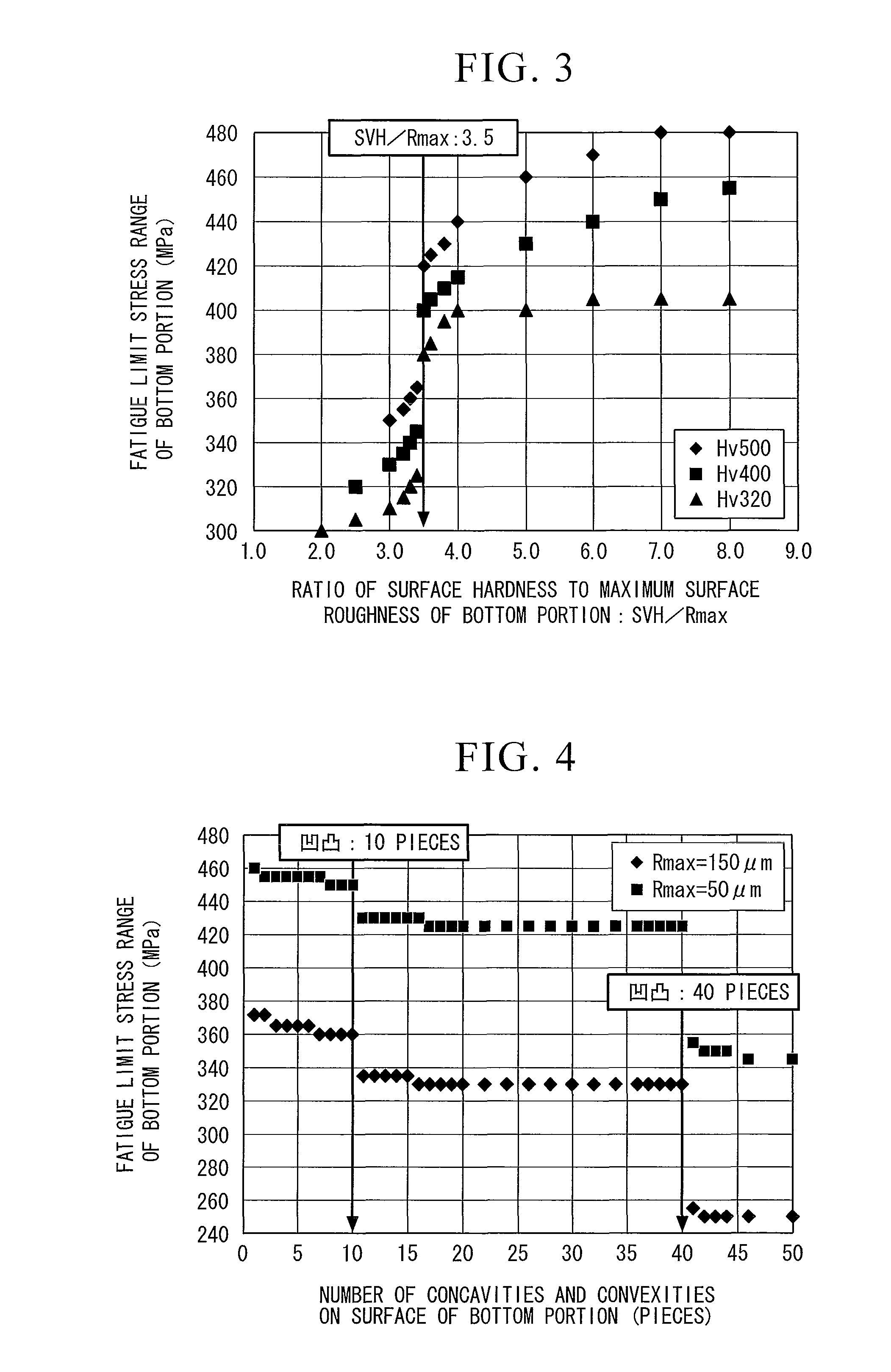Pearlite rail
a technology of pearlite and spherical steel, which is applied in the field of pearlite rail, can solve the problems of significant wear on the head top or the head corner portion of the rail, reduce the service life, and increase the amount of wear, so as to maintain the hardness (strength) of the pearlite structure, reduce the stress range of fatigue limit, and improve the effect of fatigue damage resistan
- Summary
- Abstract
- Description
- Claims
- Application Information
AI Technical Summary
Benefits of technology
Problems solved by technology
Method used
Image
Examples
examples
[0198]Next, Examples of the invention will be explained.
[0199]Tables 1-1 to 1-4 show chemical components and characteristics of the steel rail (pearlite-based rail) of Examples. Tables 1-1 (steel rails A1 to A19), 1-2 (steel rails A20 to A38), 1-3 (steel rails A39 to A52), and 1-4 (steel rails A53 to A65) show chemical component values, microstructures of the surfaces of the head portion and the bottom portion of the rail, surface hardness (SVH), the maximum surface roughness (Rmax), value of surface hardness (SVH) / the maximum surface roughness (Rmax), and the number of concavities and convexities (NCC) that exceed 0.30 times the maximum surface roughness, fatigue limit stress range (FLSR). Moreover, results of fatigue tests performed by methods shown in FIGS. 6A and 6B are included.
[0200]Tables 2-1 (steel rails a1 to a10) and 2-2 (steel rails a11 to a20) show chemical components and characteristics of steel rails compared to the steel rails (A1 to A65) of Examples. Tables 2-1 and 2...
PUM
| Property | Measurement | Unit |
|---|---|---|
| surface roughness | aaaaa | aaaaa |
| length | aaaaa | aaaaa |
| frequency | aaaaa | aaaaa |
Abstract
Description
Claims
Application Information
 Login to View More
Login to View More - R&D
- Intellectual Property
- Life Sciences
- Materials
- Tech Scout
- Unparalleled Data Quality
- Higher Quality Content
- 60% Fewer Hallucinations
Browse by: Latest US Patents, China's latest patents, Technical Efficacy Thesaurus, Application Domain, Technology Topic, Popular Technical Reports.
© 2025 PatSnap. All rights reserved.Legal|Privacy policy|Modern Slavery Act Transparency Statement|Sitemap|About US| Contact US: help@patsnap.com



